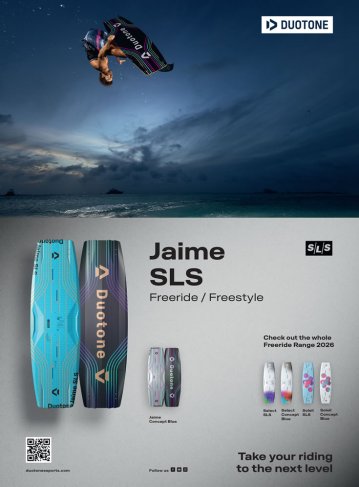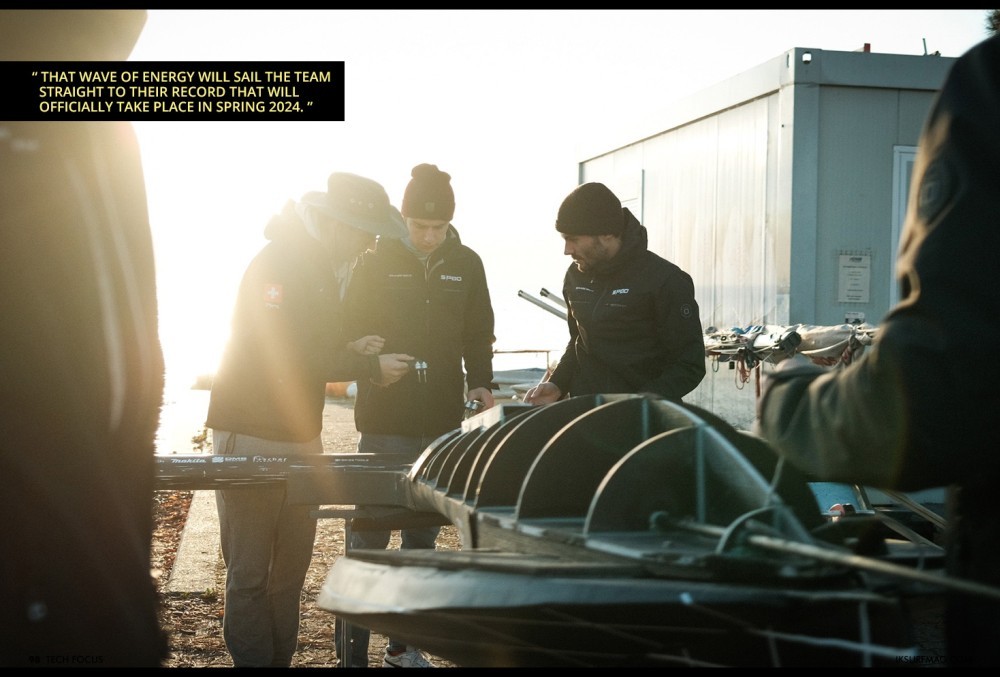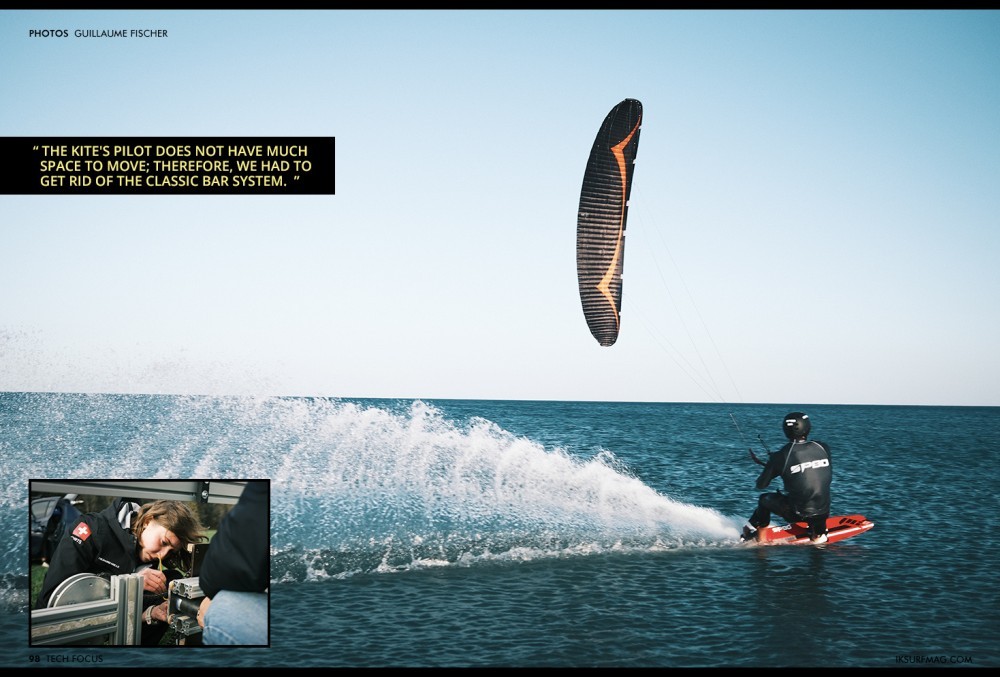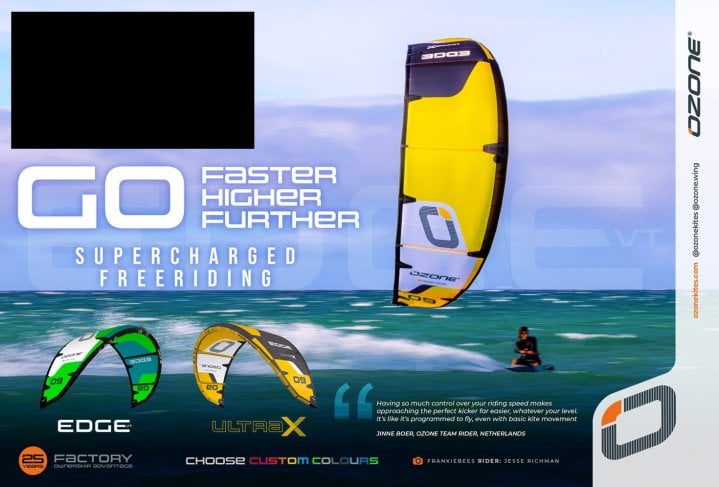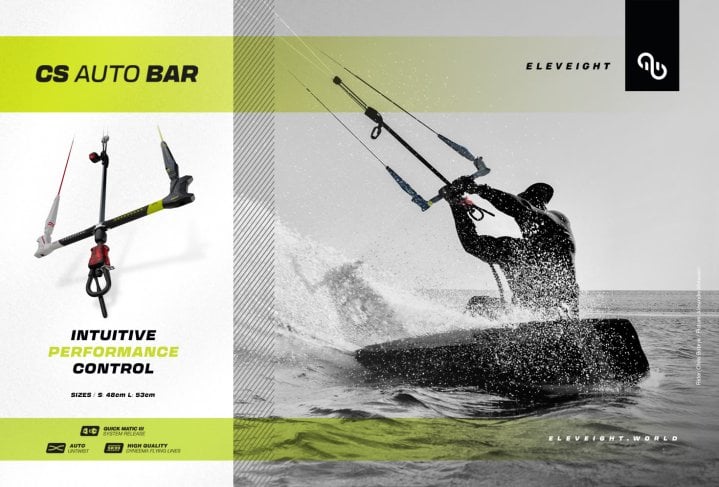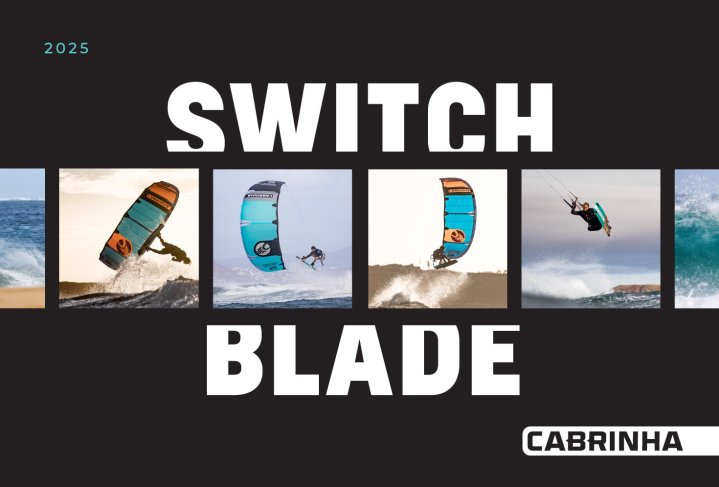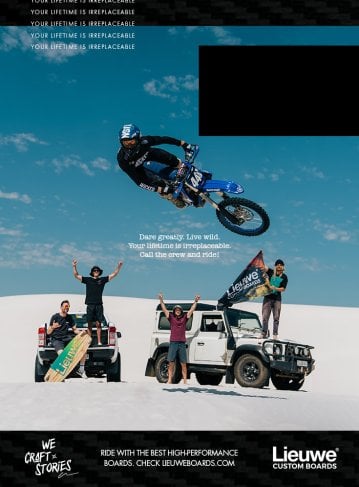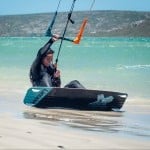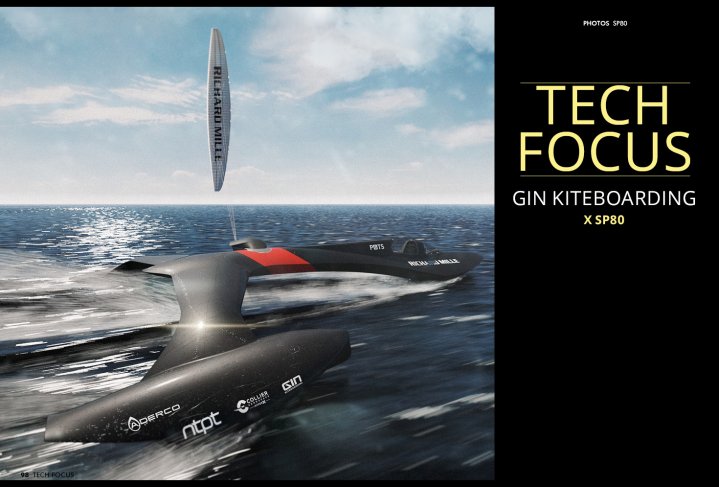
Tech Focus: Gin Kiteboarding X SP80
Issue 98 / Tue 11th Apr, 2023
We've been following the SP80 project since the start, excitedly awaiting the team's attempt to break the world sailing speed record using a giant kite attached to a trimaran. We caught up with the development team to see how the project is going in this Q&A!
Let's start with an introduction to the project goals, how Gin is involved, and the current status.
In 2022, Gin Kiteboarding became an official supporter and kite supplier for the SP80 project, which consists of shattering the current world sailing speed record with a giant trimaran boat developed internally, hauled by a giant kite.
July 2023 is the official deadline for the first launch on the water in the South of France. By then, the team will have prototypes ready for the foil and for the kite that will be closer than ever to the final result. The idea is to first test the boat with small kites and to gradually increase in size and speed as the pilots get more comfortable.
Everything is finally coming together! Even with a boat that won't be 100% optimised, it is a huge accomplishment to ultimately put it out on the water after three years of work. Everyone is absolutely psyched at that prospect, and this memorable landmark will for sure boost the troops and represent a big step forward in the project. That wave of energy will sail the team straight to their record that will officially take place in Spring 2024.
Can you share some details on the progress of the development of the giant kite?
The latest add-on to SP80's development setup is undoubtedly their custom-built test rig that serves the purpose of validating the steering system from inside the boat. Instead of a bar like for kitesurfing, a steering wheel coupled with a lever will give the necessary power.
A series of tests were conducted last November in the South of France, with wind conditions that will be the closest to reality. The whole purpose of these tests is to launch the kite from the water and steer it with a control system, like in the boat. The tests started with a small 9m kite, and they increased in size until reaching 44m. What worked well was the ease of piloting a kite, even for the ones who had never done it before. As for the regulars, moving from a bar to a steering wheel happened to be relatively intuitive.
How does one adapt a kite bar to a steering wheel system? What challenges came up, and how did the team arrive at the final design?
The first major problem to tackle is ergonomics. In the cockpit, the kite's pilot does not have much space to move; therefore, we had to get rid of the classic bar system. The rotation of the kite (from left to right and back) is achieved using a custom hydraulic system where the pilot uses a wheel to steer the kite. The trimming process also uses a hydraulic pump that imitates the sheeting.
Piloting with video feedback was also a first. As the visibility inside the cockpit will be pretty limited, it is imperative for the pilots to have a video feed of the kite, especially for launching and landing.
During the whole design process, we went through several versions, and the only way to choose one of them was to test each version. We tested the system to ensure that the solution was easy to use for the pilot. After small adjustments, we truly believe that the solution we have will work in all operating conditions, and no trade-off was made to ensure the safety of the crew and the performance of the boat. The test rig allows the crew to test the kite's emergency release system in a secure way. It is crucial for the two pilots on board to be in position to cut the kite's power at any given time!
How is everything working with the kite testing?
The team carried out some kite launching and landing tests, with the same constraints as if they were launched from the water. A precise procedure to follow must be in place by July. Those precise tests were performed with a Boom V2 9m, 11m, and 21m, which contributed to the elaboration of the very first kite prototype, currently in the making with Hans Bollinger, our kite foil engineer at Gin Kiteboarding. We have a kite in the making, based on the results of the latest tests; it will be a 30m kite, based off of a Gin kite, but with an adapted bridle plan to suit the hydraulic control system inside the boat.
What goes into scaling a 9m or 11m kite up to a 21m and eventually 30m kite? How many changes are there in the design for the SP80 kite vs a production kite?
The main challenge that we have to face for the scaling of the kites is to keep its structural integrity. The load cases that will be applied to the kites at such speeds and for such areas are way bigger than the ones applied when riding with a kiteboard. The changes reside in the internal structures of the kite and the type of material to use, because we have to keep a good strength-to-weight ratio. We're also looking into different materials regarding kite lines because they represent a significant drag that we want to minimise as much as possible.
Why use an inflatable kite instead of a ram air kite for this speed record attempt?
For the control system testing, we used inflatable kites for their robustness and ease of manipulation, but for the record attempts, we will use ram air kites as they are more efficient than inflatable ones. Don't worry; we have some striking ideas for developing a ram air kite that can provide enough power to reach 80 knots with our boat!
The project aims to break the world speed record, but can the equipment you are developing have a greater impact outside of this goal?
If, for now, we are focusing on the world record, our goal is then to apply our developments and skills to another field, such as maritime transport (for example, adding kites to cargo, as some companies are already trying) or competitive sailing; we have many ideas of what to do next!
Click here to learn more!
By Crystal Veness
Editor at IKSURFMAG, Crystal Veness hails from Canada but is based in South Africa. When she isn't busy kitesurfing or reporting on the latest industry news for the mag, she is kicking back somewhere at a windy kite beach or working on creative media projects.


